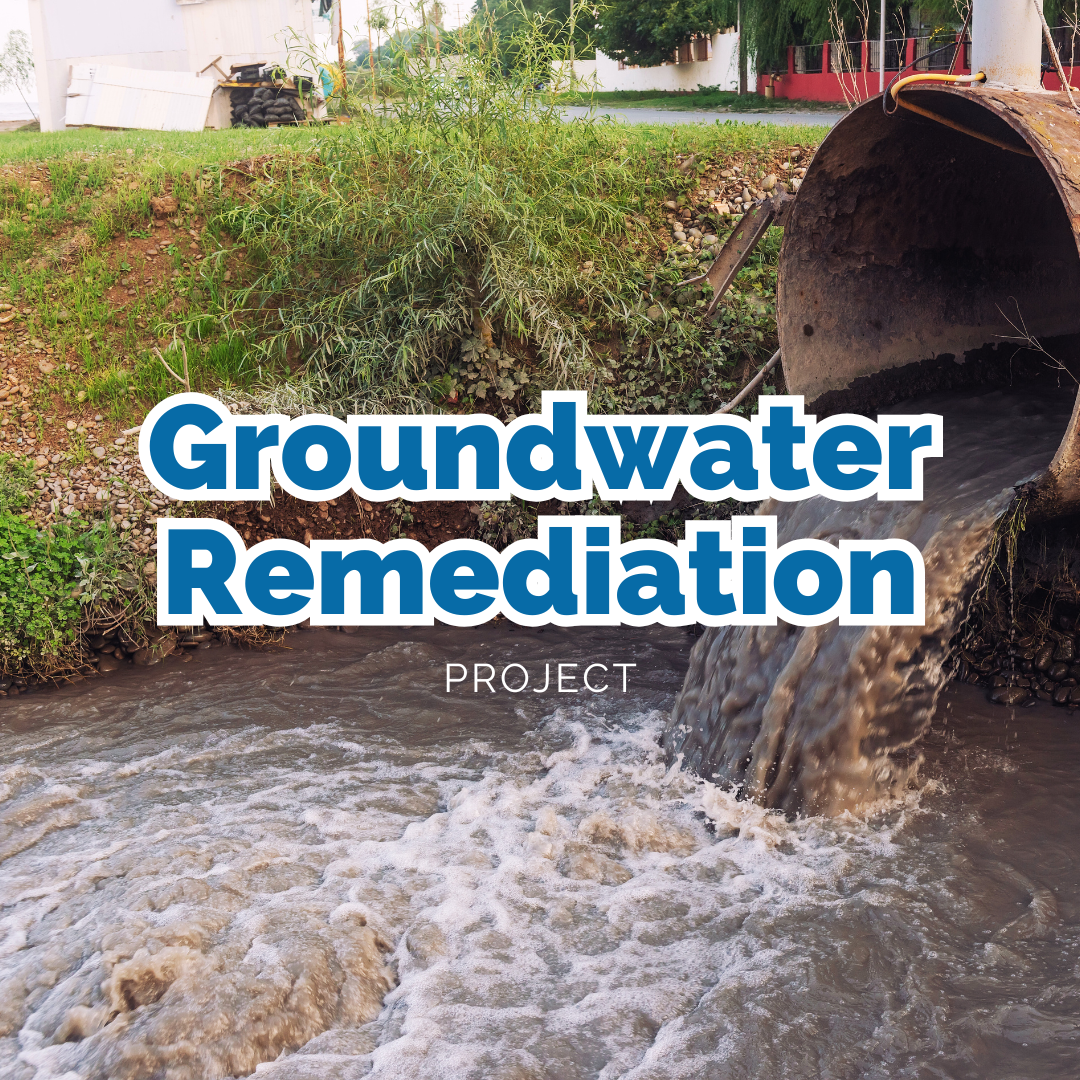Automating Groundwater Remediation
March 7, 2025 | Case Studies | 3 Minute Read

Summary:
GCS successfully designed and implemented a Programmable Logic Controller (PLC)-based control panel for a complex groundwater and surface water remediation system. This project was carried out at a large industrial facility’s River Road site, situated along the Poentic Kill, and was supervised by CB&I Environmental and Infrastructure, Inc. The general contractor was APTIM (formerly CB&I’s Capital Services business unit), and the electrical work was performed by Hour Electric Co., Inc., located in Fort Edward, NY.
Background:
The project site, located in the southwestern corner of the facility’s sprawling River Road property, was used as a dumping ground by the owner from the 1940s to the 1980s. During this time, large quantities of building debris and volatile organic compounds (VOCs) were buried at the site. In the mid-2010s, the U.S. Environmental Protection Agency (EPA) mandated the owner to perform remediation on the site’s most contaminated areas.
To meet the EPA’s mandate, a dual-purpose remediation system was devised and implemented. The system was designed to treat both seepage water and groundwater using advanced chemical and mechanical treatment processes. The seepage water collected from multiple locations along the Poentic Kill would be treated by adding caustic chemicals, aerating, flocculating, clarifying, and filtering the water through sand and multiple bag filters. This was followed by a final polishing step using activated carbon before returning the treated water directly into the environment or via an irrigation system.
The system also addressed the treatment of sludge. Collected sludge was mixed with polymer and transferred into geotube bladders, allowing for water drainage to be sent back for treatment with the seepage water. Once the bladders were full, they would be safely transported off-site for disposal.
Additionally, several sets of dual-purpose wells were drilled to alternate between groundwater extraction and reinjection. This was facilitated by treating the extracted water with sulfate and allowing the reinjected groundwater to disperse effectively. The wells were periodically switched between extraction and injection to maximize efficiency, with rest periods allowing for the treated water to disperse.
Objectives:
The primary objectives of the project were:
- Real-Time Data Collection: Accurately measure tank levels, flows, pressure, and key chemical concentrations.
- Equipment Control: Ensure the safe and sequential startup of equipment, while maintaining optimal process operation.
- Alarm Notification: As the facility was unmanned, provide real-time notifications to personnel in case of any process or equipment failures.
Solution Implementation:
To meet the project’s objectives, GCS configured and programmed a Rockwell Automation CompactLogix PLC. The PLC was tasked with handling the necessary measurement and control signals for the remediation system. Additionally, a Phoenix Contact panel PC running advanced monitoring software was installed on the control panel to enable operator monitoring and control.
The control system was further enhanced with the integration of Smartsights WIN-911, which enabled wireless alarm notifications to the site’s alarm system via a cellular connection. This ensured that personnel were promptly alerted in case of any process or equipment malfunctions.
The system’s reliability was bolstered by the inclusion of surge suppressors, uninterruptible power supplies (UPS), proper control enclosure ventilation, and backup heating systems to maintain optimal operation in various environmental conditions.
Results and Benefits:
The remediation system allowed the facility’s personnel to monitor and control the system remotely, requiring only infrequent on-site visits. In the event of any process or equipment failures, the system provided immediate alarm notifications, ensuring swift responses and minimizing downtime.
This automated approach not only reduced labor costs but also ensured that the remediation processes were carried out consistently and effectively, helping the facility owner comply with the EPA’s mandate.
Conclusion:
By collaborating closely with the owner, the engineer (CB&I Environmental), and the general contractor (APTIM), GCS successfully designed and implemented an automatic control system for a complex groundwater and surface water remediation process. The solution delivered real-time monitoring, reliable equipment control, and immediate alarm notifications, all while enabling the owner to meet its regulatory obligations efficiently.
The success of this project highlights GCS’s expertise in designing robust, automated control systems for critical environmental remediation projects.


